We’ve been thinking a lot this week about school-level expenditures, and if the expenditures relate to student academic growth. We think that growth is the best reflection of the effect that a school is having on student learning. Spoiler Alert: there is essentially no relationship between how much a school is spending and how much growth is being made by the students enrolled.
As you may remember, last spring the state released school-level expenditures for the first time. This presents an unprecedented opportunity to examine the equity, efficiency, and efficacy of Arkansas’ public education spending.
We have examined school-level expenditures through a variety of lenses in previous posts, and have found that Arkansas’ schools spend more the higher a school’s poverty level, that overall traditional school and charter school expenditures per pupil are quite similar, and that Arkansas spends the most on high schools and the least on middle schools, with elementary school spending falling in between.
We also have posted a lot about growth! You probably know by now that growth is much less correlated to poverty at the school level than achievement, students in schools with larger average class sizes demonstrated greater academic growth than their peers in smaller classes, and growth doesn’t have the intended impact on school level grades.
In this post we are digging into a big question- is more spending related to higher student growth?
In this analysis, we are considering 2017-18 school-level per pupil expenditures and the 2017-18 school content growth score. We are using 2017-18 data since the 2018-19 expenditure data haven’t been released yet. Please note that we exclude the high school level Alternative Learning Environments (ALEs) from this analysis due to the small and specialized populations that they serve.
School expenditures are reported in various categories. We start with the personnel expenditures as the majority of school funds are used to pay for teacher salaries and benefits. The data presented in Figure 1 show that there is not a strong relationship between school instructional spending and the academic growth of students at the school. Some schools are represented in the upper left quadrant, spending more than average per student on personnel, while students demonstrate lower than expected growth. Other schools are represented in the lower right quadrant, where students demonstrate higher than expected growth, even though the school is spending less than average per student on personnel.
Figure 1: Scatter Plot of 2017-18 School-Level Personnel Expenditures Per Pupil vs. Content Growth
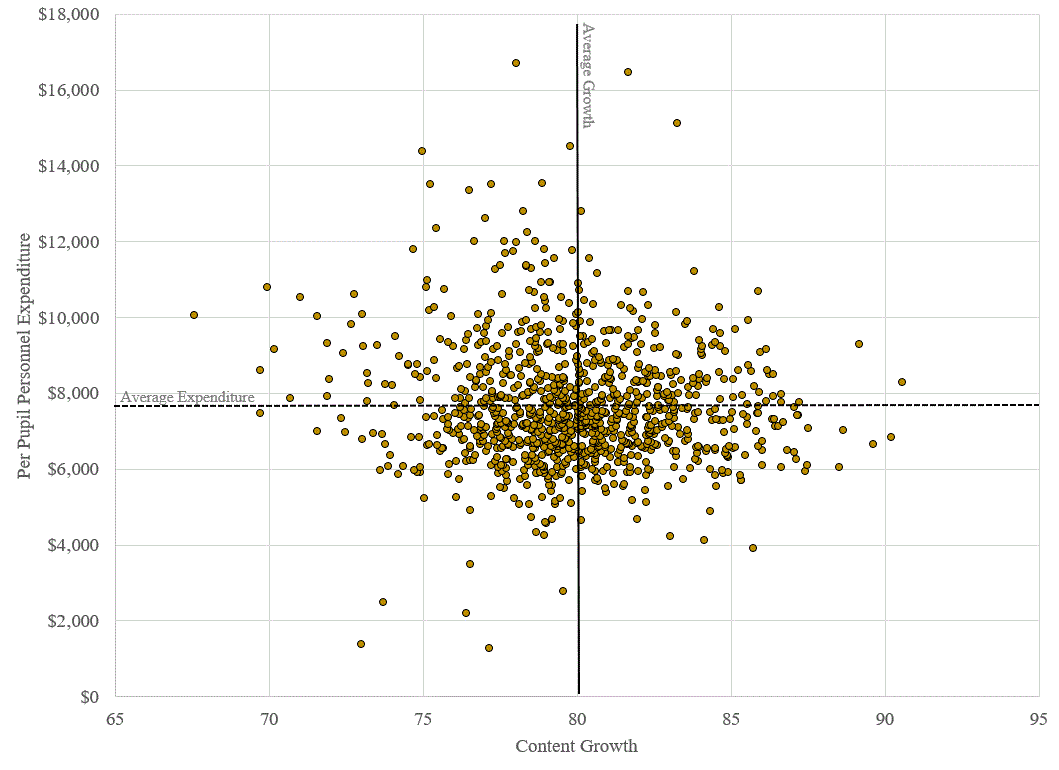
We also considered the relationship between student academic growth and instructional spending. As presented in Figure 2, we see the same lack of relationship between expenditures and student growth.
Figure 2: Scatter Plot of 2017-18 School-Level Instructional Expenditures Per Pupil vs. Content Growth
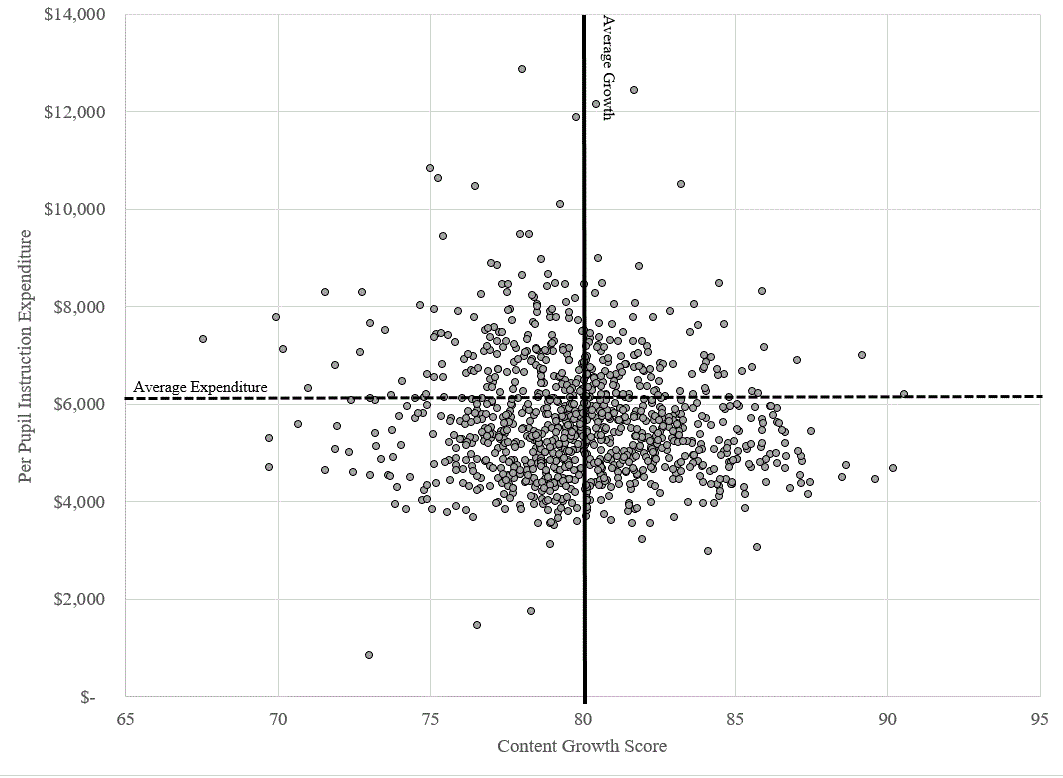
Finally, we expanded our analysis to total school expenditure, because we think maybe all the dollars spent could have an impact on student learning. Once again, there is a lack of a relationship, as shown in Figure 3.
Figure 3: Scatter Plot of 2017-18 School-Level Total Spending Per Pupil vs. Content Growth
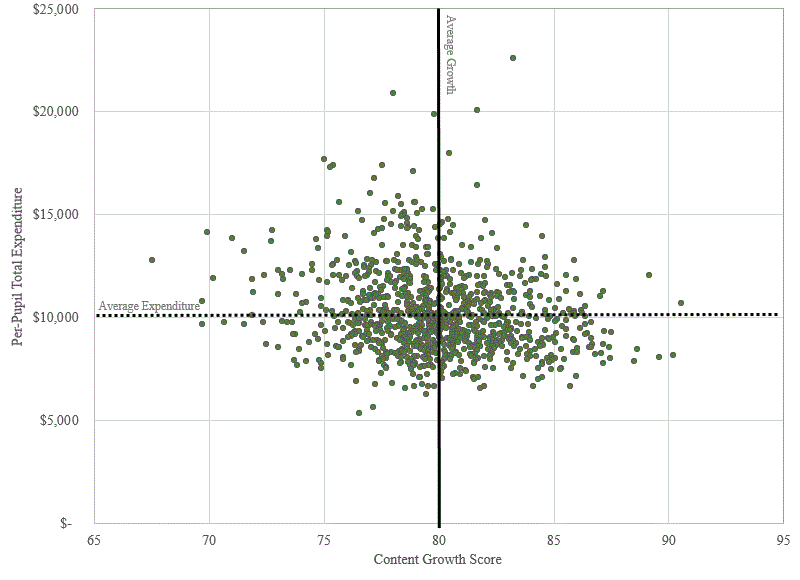
Does the relationship vary by school level?
We might think that greater expenditures in elementary schools lead to larger academic gains for students than investments in later grade levels. We previously found that expenditure varies between school levels (elementary, middle, and high). Content growth should not vary by school level, as average growth at each grade level is 80. Below, we present the figures for Elementary, Middle, and High Schools, respectively.
Figure 4: Scatter Plot of 2017-18 School-Level Total Spending Per Pupil vs. Content Growth, Elementary School Level
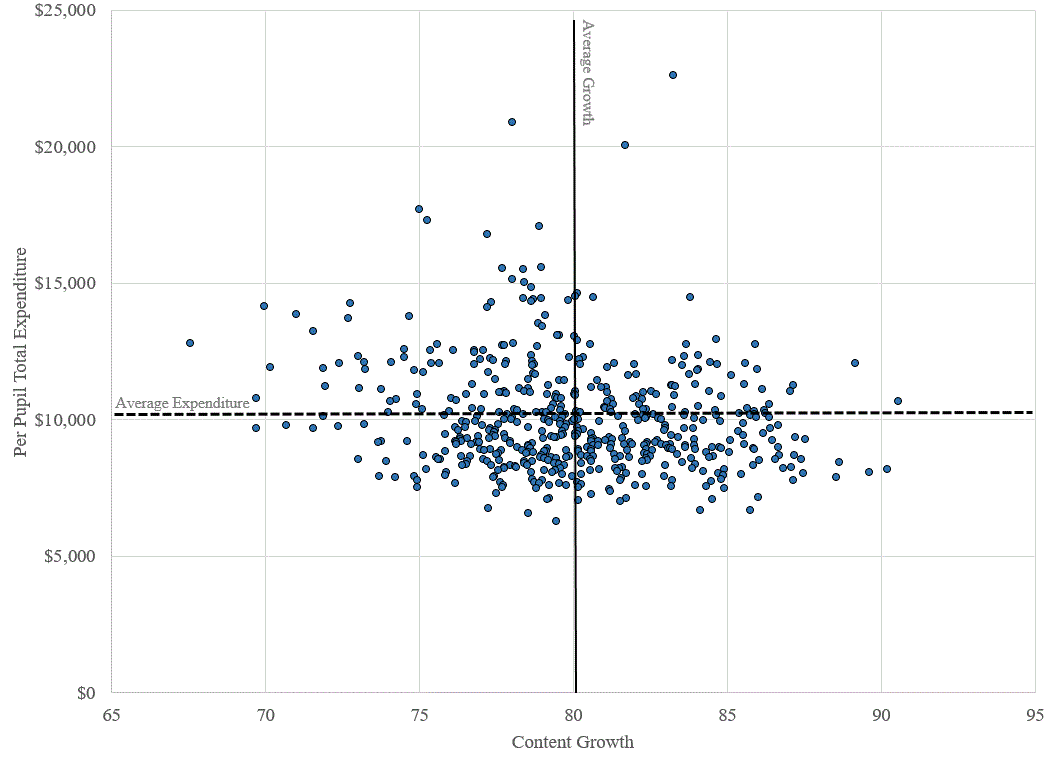
Figure 5: Scatter Plot of 2017-18 School-Level Total Spending Per Pupil vs. Content Growth, Middle School Level
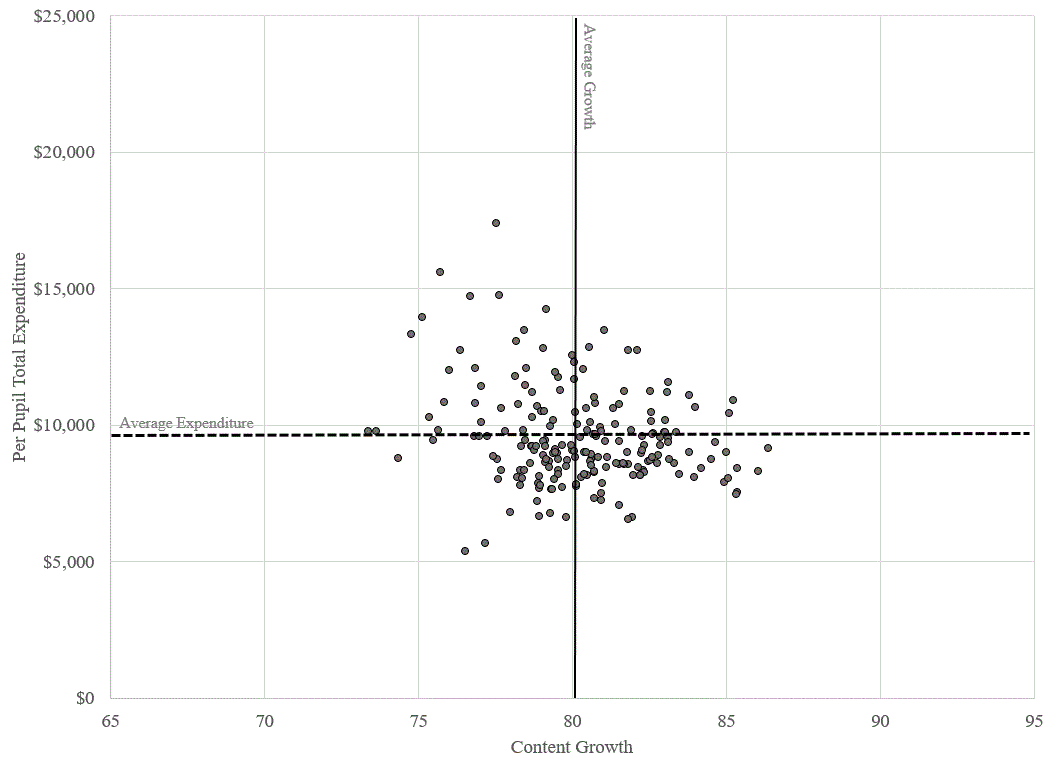
Figure 6: Scatter Plot of 2017-18 School-Level Total Spending Per Pupil vs. Content Growth, High School Level
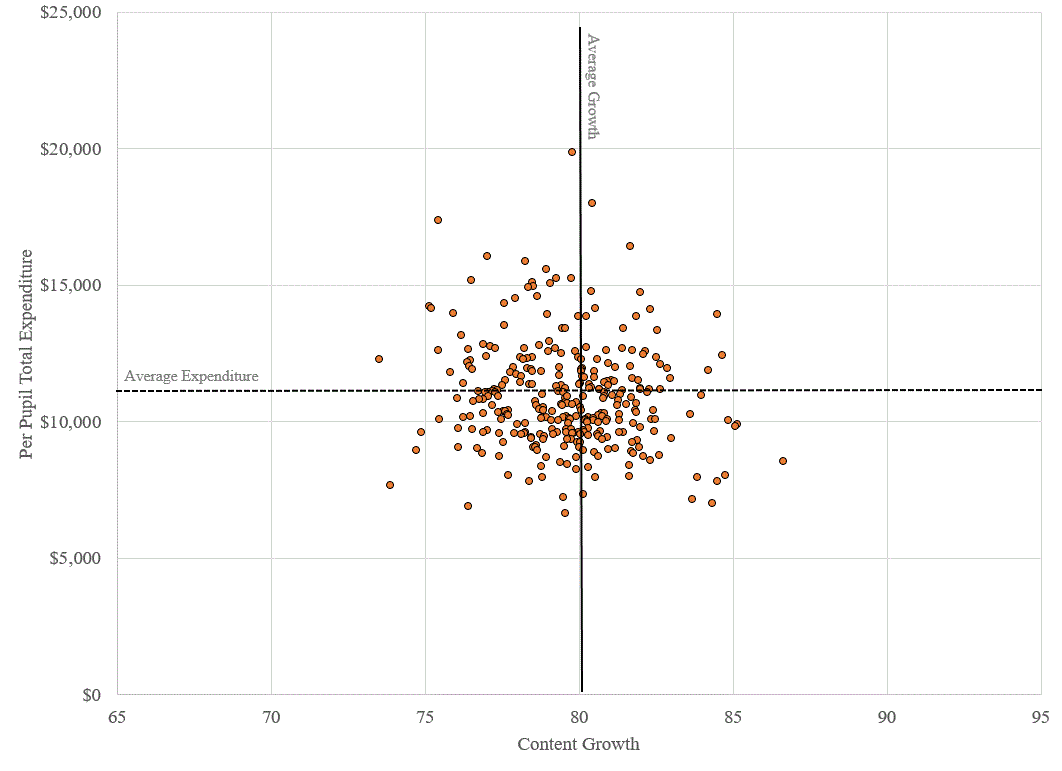
At all school levels we see essentially no relationship between the amount spent per pupil and the academic growth of students.
Does this mean that money doesn’t matter to student growth?
Nope! This analysis is descriptive, not causal, meaning that we are just describing the relationship between two variables, as opposed to claiming that changes in one will (or will not) lead to changes in the other. What our descriptive analyses do shed light on, however, is that schools spending the same amount per pupil can realize very different growth outcomes for students. This lack of a direct relationship between expenditures and growth could indicate that it is more about HOW schools are using their resources (including time, money, and people) than how many resources they have. We look forward to seeing the 2018-19 school expenditure data and checking to see if the (lack of) relationship still exists. What do you think?
